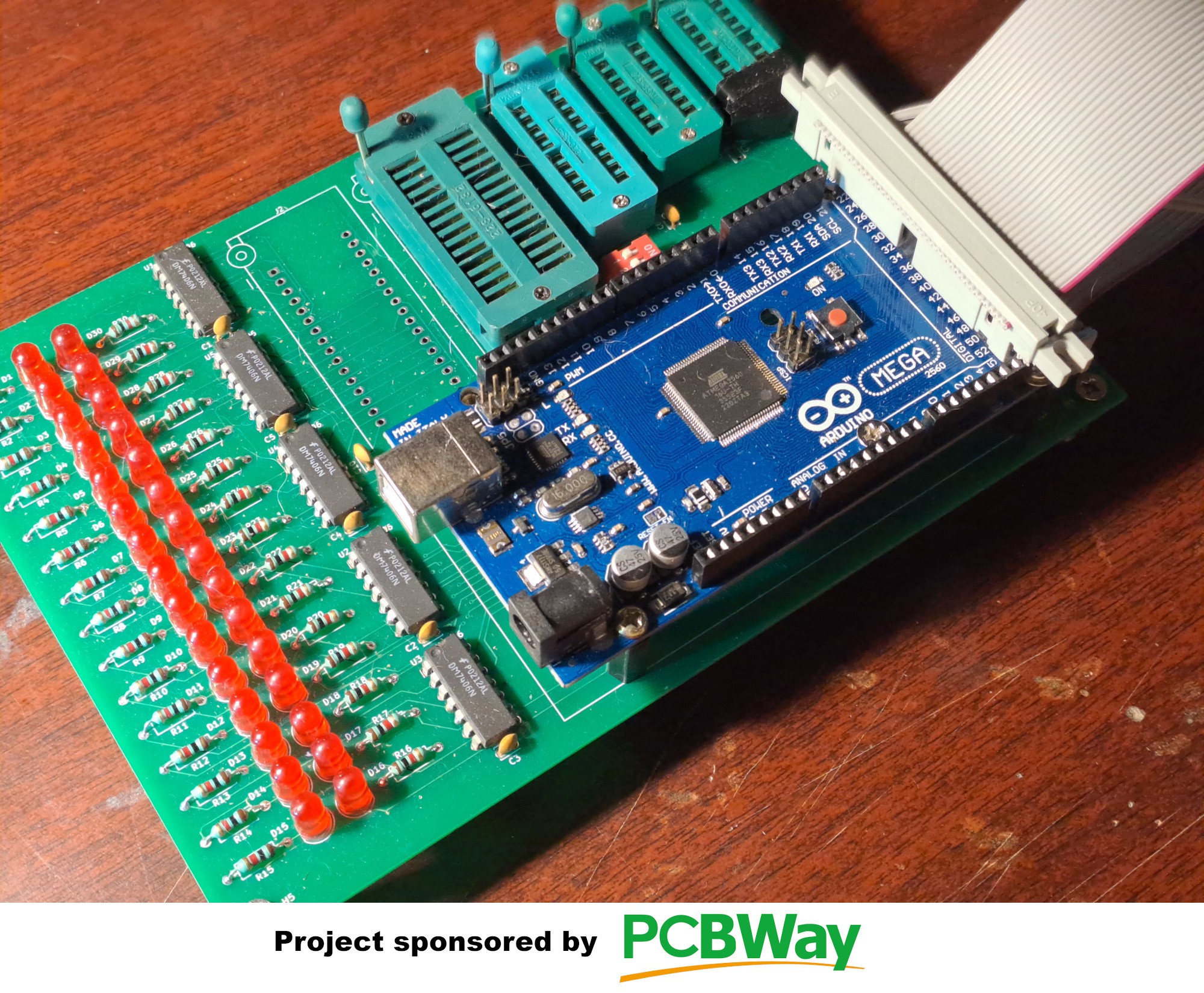Because most soviet clone chips are new old stock (Over 30 years old in most cases), a little testing was in order. Therefore, I made the chip tester module below:

The Arduino Mega is a "generic" Chinese clone but it works all right. The last Zif socket (32 pins) is not yet installed because it is still in the mail. It should arrive shortly. I will have to test 32 pin chips when I start dealing with static RAM. I know this is not exactly "classic", according to my own definition, but I decided that using DRAM from the period (4164, 41256) would have really been too much of a hassle.
I am happy I made this tester because some batches of chips contained up to 25% duds.
If anyone is interested, I can publish the documentation for this tester here (Schematic, PCB and Arduino test programs).
 Nicolas REIMEN
Nicolas REIMEN
Discussions
Become a Hackaday.io Member
Create an account to leave a comment. Already have an account? Log In.
This is a great concept of a tester, a combination of custom but simpler board and omnipresent Arduino. Btw, did you think of implementing a "test" port on your boards, so that some level of testing can be done in place? There should be definitely a "lamp test" switch that feeds all LEDs to make sure they all work (many CPU consoles used to have this).
Are you sure? yes | no